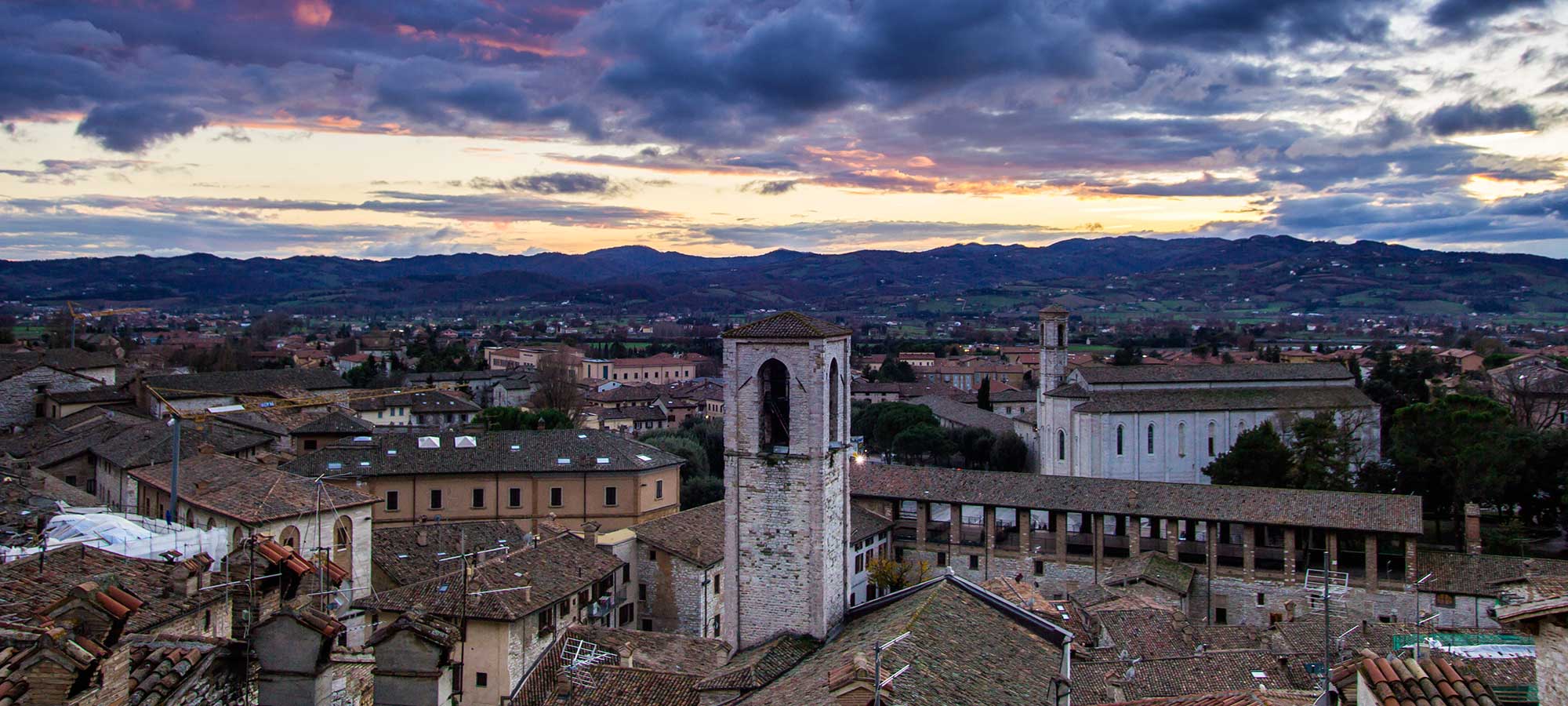Gubbio
The city of the crazy people is ready to welcome you with its history and wonder
City of crazy people, a touch of colour
Given the particular unpredictability of its citizens, the so-called
eugubini, Gubbio is also known as the
city of the crazy people and by following a special process, i.e. going around a fountain 3 times, you can also get your crazy person licence!
What to see in Gubbio
From all the
things to visit in Gubbio, we recommend first and foremost:
Ranghiasci Park
Built in the mid-nineteenth century at the behest of a noble Gubbio family,
Ranghiasci Park is the most important park in Gubbio and offers the opportunity for a stunning stroll through sacred Ingino mountain and the Ripa path.
The arrangement of avenues, columns, buildings and the unmissable neoclassical “temple” will be wonderful settings for your photographs in order to remember your
Umbria holiday!
Fontana del Bargello
The legendary
fountain of the crazy people is right in front of the Palazzo dei Consoli, in Piazza Grande. Why not try and follow the right process too – all you have to do is ask any Gubbio native – to get your crazy person licence!
Palazzo Ducale
The
Palazzo Ducale of Gubbio is found opposite the Cathedral, which was built on the orders of
Duke Federico da Montefeltro towards the end of the fifteenth century in perfect renaissance style.
Basilica of Sant'Ubaldo
The basilica of Gubbio’s patron saint can be found atop of Mount Ingino and can be reached via a thrilling ride on a scenic cable car. The remains of the saint and the famous
ceri, statues of the saints, are found within the sanctuary. Every year on the first Sunday in May they become the protagonists of one of the most important
festivals in Gubbio.
Palazzo dei Consoli
It is one of the city’s most important symbols, at least at the level of tourism. Created in gothic style, the
Palazzo dei Consoli di Gubbio looks onto the scenic
Piazza Grande and is home to the
Civic Museum, where you can retrace the historic stages of the town and see the famous
Eugubine Tables in particular, extremely ancient evidence of the Umbra language, dating back to the 3rd or 2nd century BC.
Cathedral
This is the most important church in the city, built at the end of the 12th century and completed in 1241. The interior features a wealth of works from the greatest Gubbio artists from the sixteenth century. It is located in a scenic position that can be reached on foot or by using the very convenient public lift.



